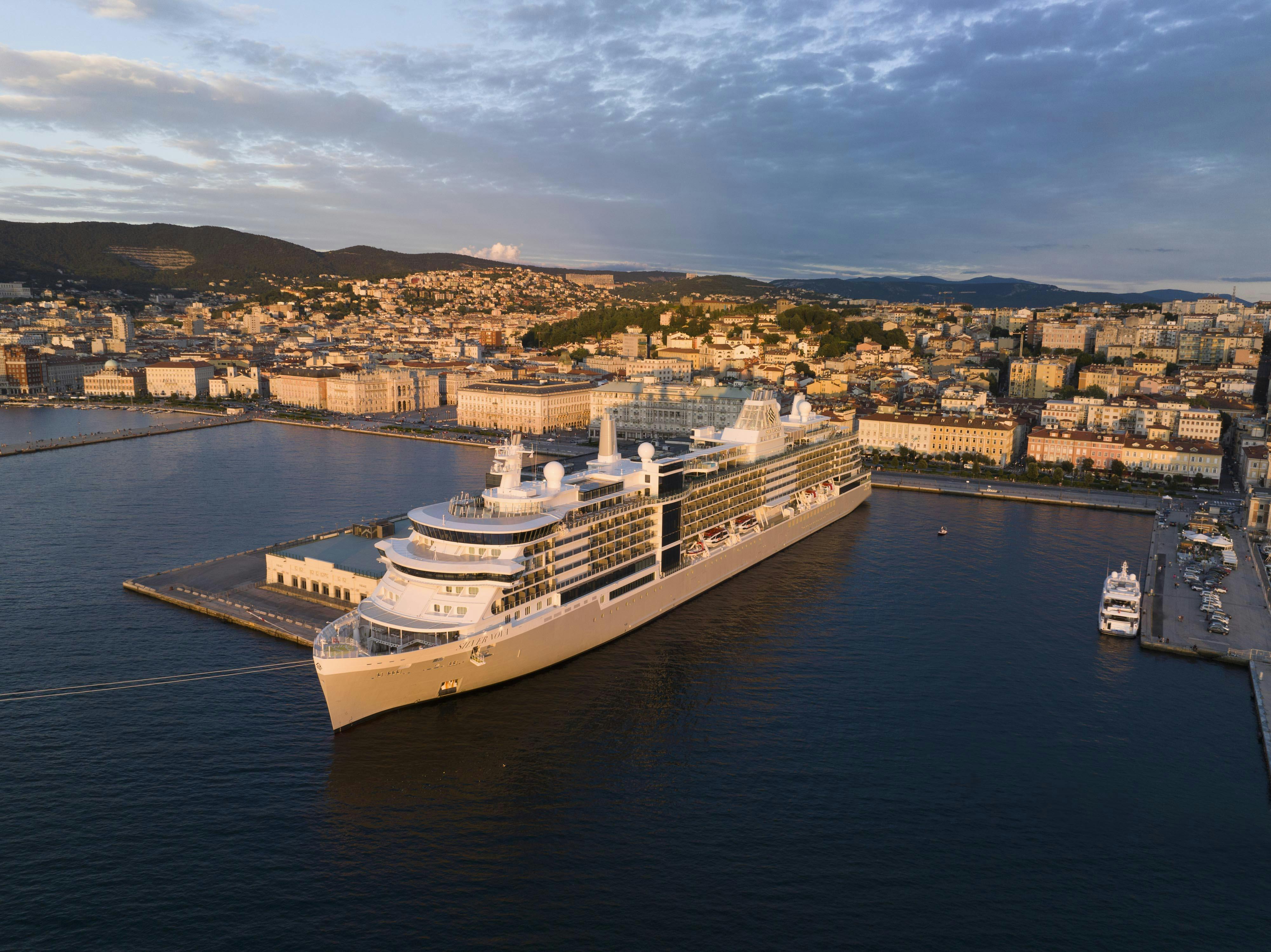Insider’s Guide, Italy’s Trieste: Chef Antonia Klugmann Introduces Us to Her Hometown
Asking chef Antonia Klugmann to share a list of favorite places in her hometown of Trieste is like picking a lock. It might yield eventually, but it’ll take some work. As she puts it (we have known each other for over a decade): “Triestini are very private: they don’t particularly like tourists, so when it comes to revealing the secrets of their town, they choose carefully what to tell.”
I waited patiently until she invited me there herself.

And what follows is the result of 24 hours of walking Trieste and talking Trieste with one of Italy’s most interesting chefs (you may have seen her on Stanley Tucci’s “Searching for Italy.”)
Let’s start by saying that the owner of L’Argine a Vencò, a Michelin-starred restaurant in tiny Collio, about an hour outside of the city (and featured as a brand new S.A.L.T. Experience), is a bit of an anomaly for a Triestina. She left her hometown – which is at the easternmost end of Friuli-Venezia Giulia, the Italian region bordering with Austria, Slovenia, Veneto and the Adriatic Sea — when she was 18. She never lived there again. Her home is now in the countryside, near the restaurant and yet she still goes to Trieste on her days off. People on the street recognize and greet her. “Ciao,” she replies, always smiling.
The moment you start walking you realize Trieste doesn’t really feel like an Italian city. It doesn’t resemble any other place in the country. It feels a bit provincial and at the same time very “Mittel European cool,” with hints of Turin, Liguria, Palermo and Rome.
Antonia’s restaurant is housed in a restored old mill with a beautiful garden and an heirloom orchard, near a levee (“argine,” in Italian). All this is in an area of Friuli that’s famous, among other things, for its extraordinary wine production.
L’Argine a Vencò, which she owns with Vittoria, her sister and right-hand, has quickly become one of the most applauded destinations in Italy. Guests who will take part in Antonia’s S.A.L.T. Experience will leave from Trieste – and have the luck to experience it first-hand.
But we’re here today to talk about Trieste.
A region at the crossroads of history
Trieste is a stone’s throw from the frontier and street signs here are bi-lingual. This part of Italy is bound to the Balkans by history, culture and blood, and the mutual influence is impossible to ignore. Pieces of this beautiful part of the world were traded like cards, by the Venetian Republic, the Habsburgs, Napoleon, the Kingdom of Italy and fascists, annexed, freed, then annexed again.
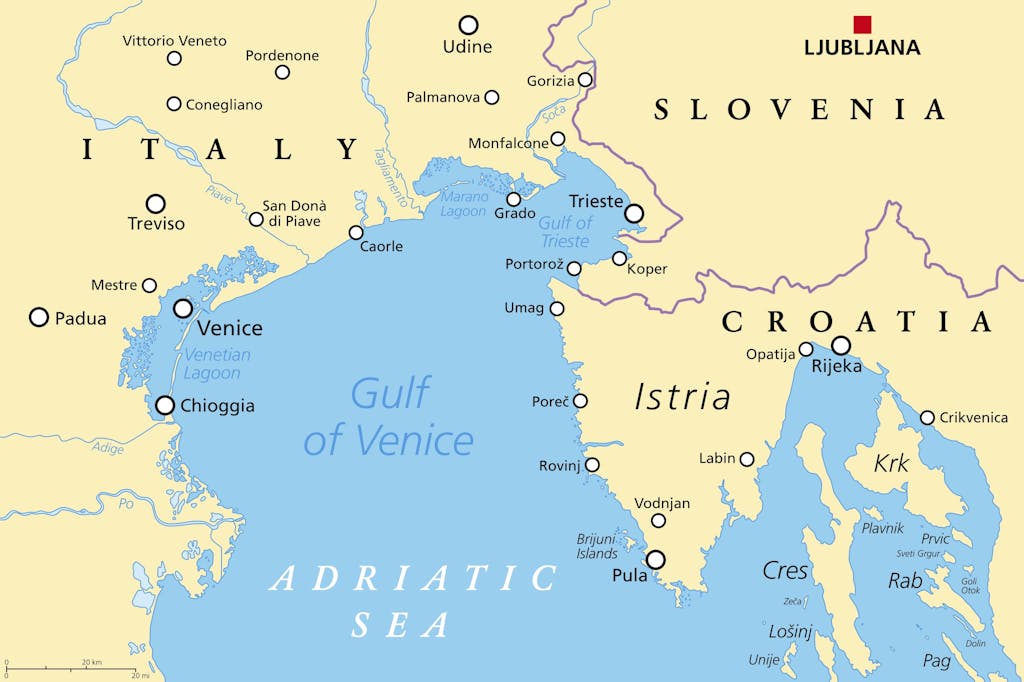
World wars and ethnic wars were fought, entire families were decimated and suffered an unforgivable amount of discrimination. The economic effects were brutal, even the landscape was forever changed. Condensing the history of Eastern Italy and former Yugoslavia (which ceased to exist with the declaration of independence of Slovenia and Croatia in 1991 – a couple of years after the fall of the Berlin wall) in a few lines would be impossible, disrespectful even, so I won’t even try (I do however urge you to research it before you go.)
It might serve the purpose of this story to remember that Trieste was for a while divided in quadrants, controlled by the Allied Forces and the Yugoslavians. Right after the Second World War it became the capital of a Free Territory: it was definitively annexed by Italy in 1954. Many families in Trieste have Balkan origins, or Central European, as well as Southern Italian. Antonia used to go to school with Slovenians whose parents refused to teach them the language, for fear of retaliation. Learning Slovenian later became a matter of pride.
Antonia’s family is Jewish (Polish-Ukranian to be exact), Emiliana and Pugliese. Almost all of the paternal side of her family died during the Holocaust; many on the maternal side fought as partisans during the war. This all comes through in her thinking, feeling and cooking (which deserves an article of its own: I’ll write that too.) This layering comes through also in the fabric of the city. There’s Anglican and orthodox churches, kosher delis, Hungarian pastry shops. “At La Bomboniera, a historic, chic pastry shop, you could buy both a Hungarian Dobosch and a classic babà, because the original pasticcere was from the South,” Antonia recalls.
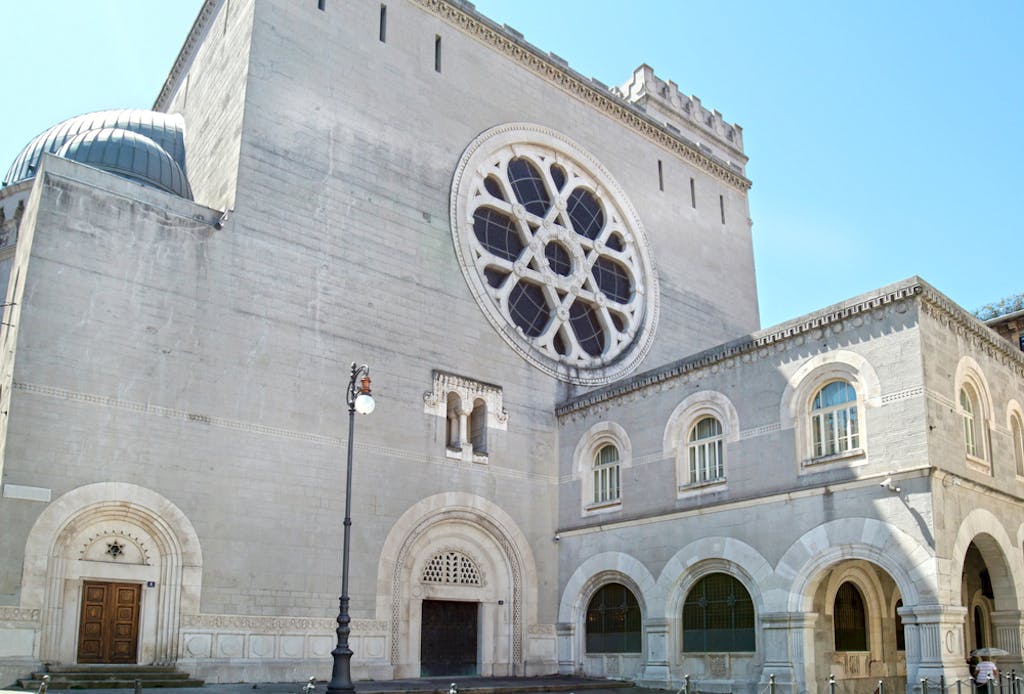
The Synagogue, which is one of her favorite buildings, is one of the largest in Europe: the Klugmanns used to own a family pew there. The first trace of the Jewish presence in Trieste dates to 1226 (in 1938 there were over 5.000 Jewish residents, today just over 500.) The Synagogue’s architects, Ruggero and Arduino Berlam, are the same behind the iconic Faro della Vittoria (the Victory lighthouse at the entrance of the city) as well as the gorgeous Palazzo Berlam, where Le Generali, an insurance company which was one of the city’s most prominent economic forces, used to have their headquarters. The Palazzo is now a Hilton Doubletree hotel where Antonia likes to go for cocktails, to admire the finely restored interiors.
A walk to remember: Antonia’s favorite spots (part 1)
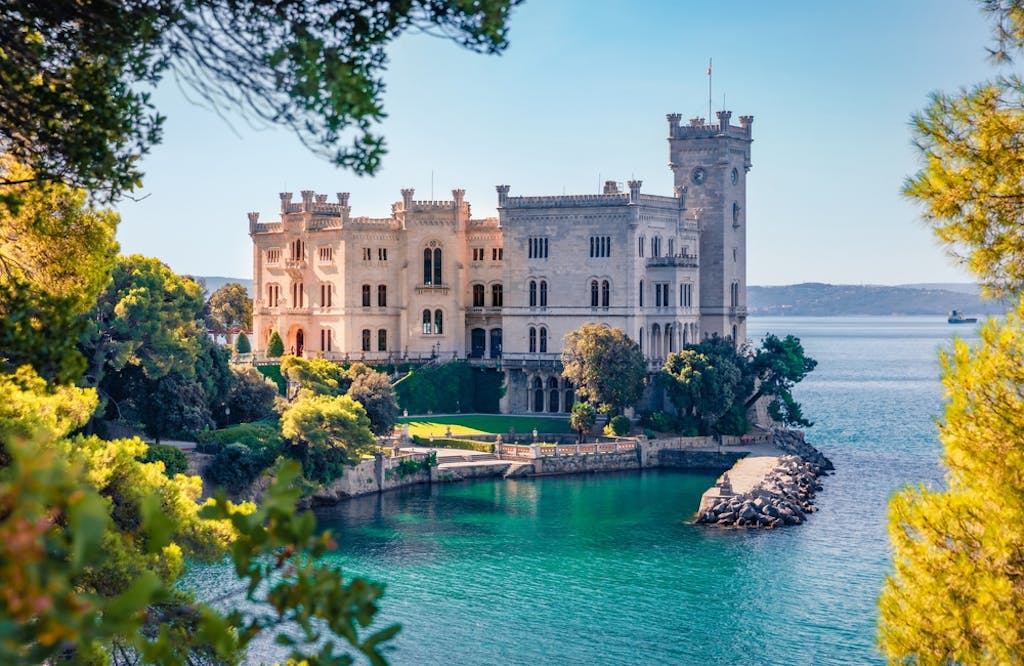
“There’s more than one way to get into Trieste,” she tells me on the way into the city. “I love driving on the coastal route because you can’t beat the view of the sea.
“Over there in the distance you can see the commercial port, with the cargo ships waiting their turn to enter.” We pass the Castello di Miramare, former Habsburg residence with a magnificent park overlooking the Trieste Gulf. There’s SISSA, the International School for Advanced Studies which is a bit like the “MIT of Trieste,” Antonia notes, and has brought to the city some the world’s most brilliant minds, contributing to its hyper-mixed cultural vibe.
“Down below to our right are wealthy residential enclaves and popular beach and nautical clubs, like Barcola. There are also nautical clubs and one beach in the city, at the Marina.” Antonia is a certified sailing instructor, runs regularly and plays tennis with a vengeance. “The Triestini are well fit and tanned almost all year round,” she says. “They’re obsessed with outdoors sports: not just sailing, but also high diving, water polo, rowing, skiing, biking, climbing, golfing. My sister is an incredible equestrian.”
The coastal route is also a privileged point for naturalistic observation. It’s lined by sumac and broom shrubs, prune, cherry and acacia trees. We drive past a World Wildlife Federation natural oasis, and Antonia pointed out that close by is the mussel farm that supplies her restaurant: “It’s near the estuary of the underground stream Timavo, and it probably explains the excellent quality of the mussels.”
“Look to the left,” she says, “and you’ll see a long stretch of small working vineyards and vegetable plots. Some of Trieste’s wealth is in real estate, and many families own country homes outside the city, or beach houses along the coast. But these smallest plots belong to humble families growing their own produce: this is also where some of the ‘venderigole,’ Trieste’s famous street vendors, used to pick the produce they would then sell at markets in town.”
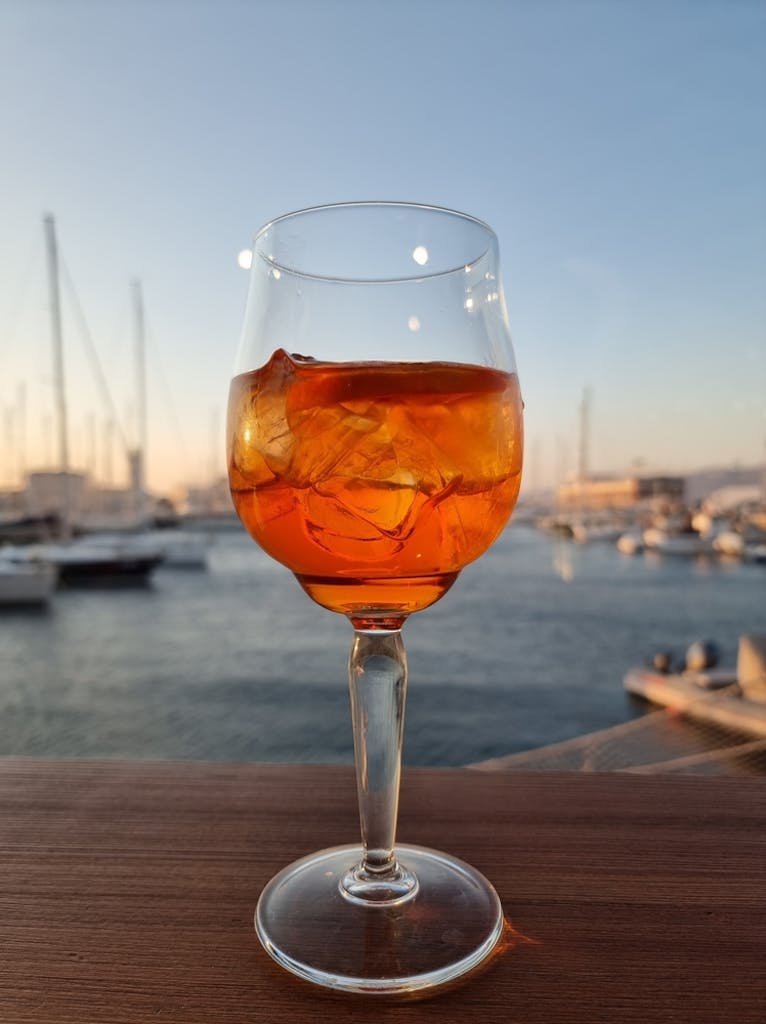
We park at the Marina, looking out at the horizon, where on a clear day like this the Alps seem to rise directly from the surface of the Adriatic (the way the Gulf is shaped makes it possible to look out at the water almost facing North.) We walk past the Pescheria Centrale, where Antonia used to shop for fish with her Pugliese grandfather, Tony. It is now a gorgeous exhibit space called Salone degli Incanti. Close by is the former hangar that used to house her sailing club: “It was quite decrepit, now it’s an Eataly.”
The moment you start walking you realize Trieste doesn’t really feel like an Italian city. It doesn’t resemble any other place in the country. It feels a bit provincial and at the same time very “Mittel European cool,” with hints of Turin, Liguria, Palermo and Rome. Because of its free port status, obtained in 1719, and the railway connecting it to Vienna since the 19th century, it grew quickly, attracting merchants and businessmen of all kinds. This is reflected in the seemingly hodgepodge of architectural styles (Neo-Gothic, Art Deco, Renaissance, Medieval, Russian, and Neoclassic) that punctuate its streets.
This is also evident in the tradition of all-day “buffets” – diners where business can be conducted all day long in front of a hot meal. Commerce never stops. Antonia took me to the famous Pepi, known for its mixed platters piled with carne bollita, where she sometimes goes after shopping for a take-out order. Today, she asked for some fried eggplant to-go, while we have a quick lunch of ham with kren (horseradish), and sauerkraut. While we are eating, she explains how in families it is common to find a mix of Eastern European dishes and regional Italian ones. Fritto misto and polpette as well as spätzle and plum-filled gnocchi.
Because of the geo-political instability of the region, Trieste suffered cycles of alternating euphoria and depression, with many people, particularly intellectuals, leaving (as during the Cold War). Yet much seems to have changed lately: there is new energy (Antonia calls it a telluric current, which she describes as an electric current that runs underground or through the sea). There are new projects. People are coming back. Triestini are a bit wary. As I said at the beginning, they’re not fond of tourists, but they hope this renaissance will bring a more sophisticated kind of tourism. And so they are observing the transition with interest.
A walk to remember: Antonia’s favorite spots (part 2)
One of the products of this telluric current is Pagna – Panificio Artigianale, opened in the center of Trieste by bread enthusiast Pedja Kostic: the Belgrade-born studied at Ca’ Foscari in Venice and then worked in bakeries in Boston for over 20 years before choosing Trieste as the permanent residence for his family and business. Antonia loves the spot, and so do I.
Pagna’s space is flooded with light and functional, the interiors refreshingly lack that calculated, generic “rustic coziness” of so many other bakeries. In the spacious lab there’s a mill for fresh flour, shelves are stocked with hearty sourdough loaves and bagels, natural wines and even specialty coffee – an almost sacrilegious notion in the city of coffee titan Illy, the city popular for its historic cafés serving cheap “capo in b” (local coffee slang for a mini cappuccino served in a glass), their Austro-Hungarian patina certainly charming for most.
The whole concept of Pagna, while familiar to many in Europe, the UK and the States, is shockingly new for Trieste, where the average offering of bread doesn’t particularly shine and where most people still prefer to pay very little for their coffee (and to not pay extra for the milk.) But customers seem to love it – a very specific clientele, sure, not necessarily young, but certainly discerning.
As we had been speaking of historic cafes, Antonia then takes me to the Antico Caffè San Marco, near the Synagogue, a favorite hangout for James Joyce (who lived in Trieste for a period), and two of Italy’s most celebrated authors, Italo Svevo and Umberto Saba. For the past few years, the Caffè has been operating under new ownership. It has been finely restored, and to reconnect to its literary salon roots it now features a well-stocked bookstore that takes up much of the main floor (“though for rare and antique books,” Antonia points out, “the place to visit is Zuckermann.”)
Antonia’s sister Vittoria and their mother still live in San Vito, one of the most charming residential neighborhoods of the city. It’s on the hills overlooking the port, full of quiet, old-money townhouses (like the art-packed one built by Antonia’s great grandmother, where she and her sister grew up and where their mother still lives), schools, playgrounds and shops. At Christmas the sisters would go to the Anglican church to sing carols; they would walk to and from school by themselves, stopping at their grandparents for lunch.
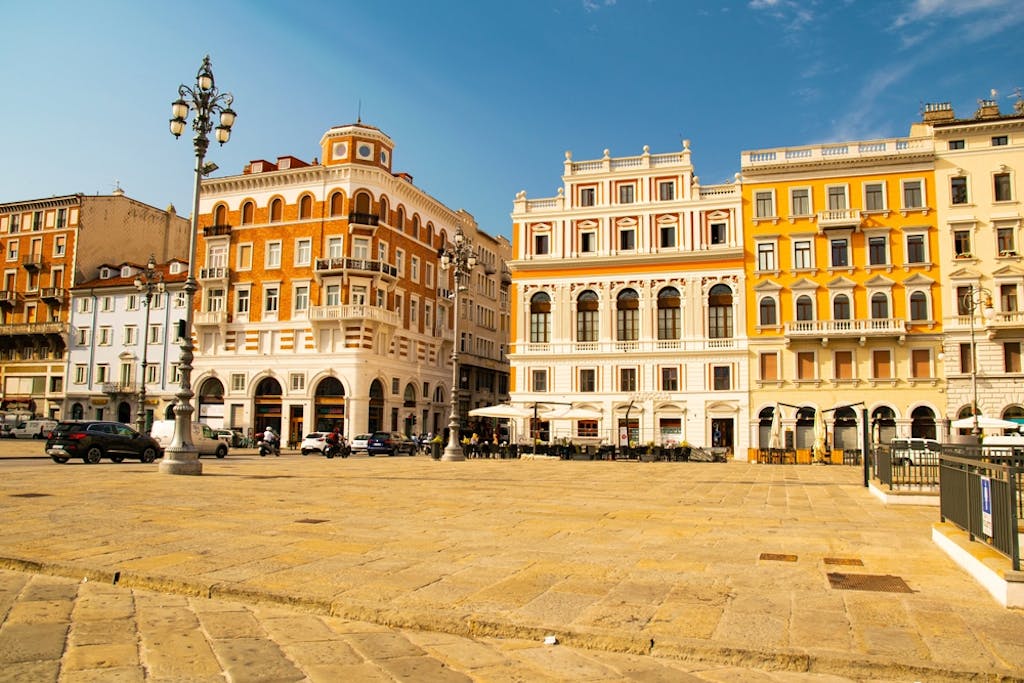
The last piece of Antonia’s personal itinerary is in Cavana, formerly a rough, working-class neighborhood, connecting San Vito to the center. Now it’s respectable and safe (and unfortunately increasingly gentrified). When she’s in town, the chef visits SET – Sapori Eccellenti del Territorio, the gourmet deli/bistro stocking much of the delicious Alpine cheese she serves at L’Argine. Another favorite is La Piccola Bottega Spiritosa, an artisanal liquor shop with a notable selection of spirits.
Unsurprisingly, when during the pandemic the Klugmann sisters opened their delivery service of revisited traditional dishes, “Antonia a Casa,” this is where they rented their shop. This is also where she comes shopping for antiques and vintage design pieces. Back in the Collio she’s been renovating the last wing of the old Argine mill: it’ll feature three new rooms and a suite, so she’s got her eyes on some new old furniture.
As our walk comes to an end, it’s clear we’ve only scratched the surface. Trieste is too hauntingly beautiful and complex: it takes time to really crack it. “I’m privileged,” Antonia says to me as we say goodbye. “I can approach it as a tourist, but also as an insider whose personal history is intertwined with the city’s own. My home is in Collio and I love being there, surrounded by breathtaking nature, but sono profondamente triestina. It’s my way of existing on the planet.”
See you soon, Trieste.
You can listen to S.A.L.T. Director Adam Sachs’ interview with Antonia Klugmann in Legends of the Border: Friuli, Slovenia, Trieste, part of Silversea’s S.A.L.T. Lab Radio podcast series (you can also read the transcript).
Ready to learn more about cruises with a S.A.L.T. program? Check out these experiences.
